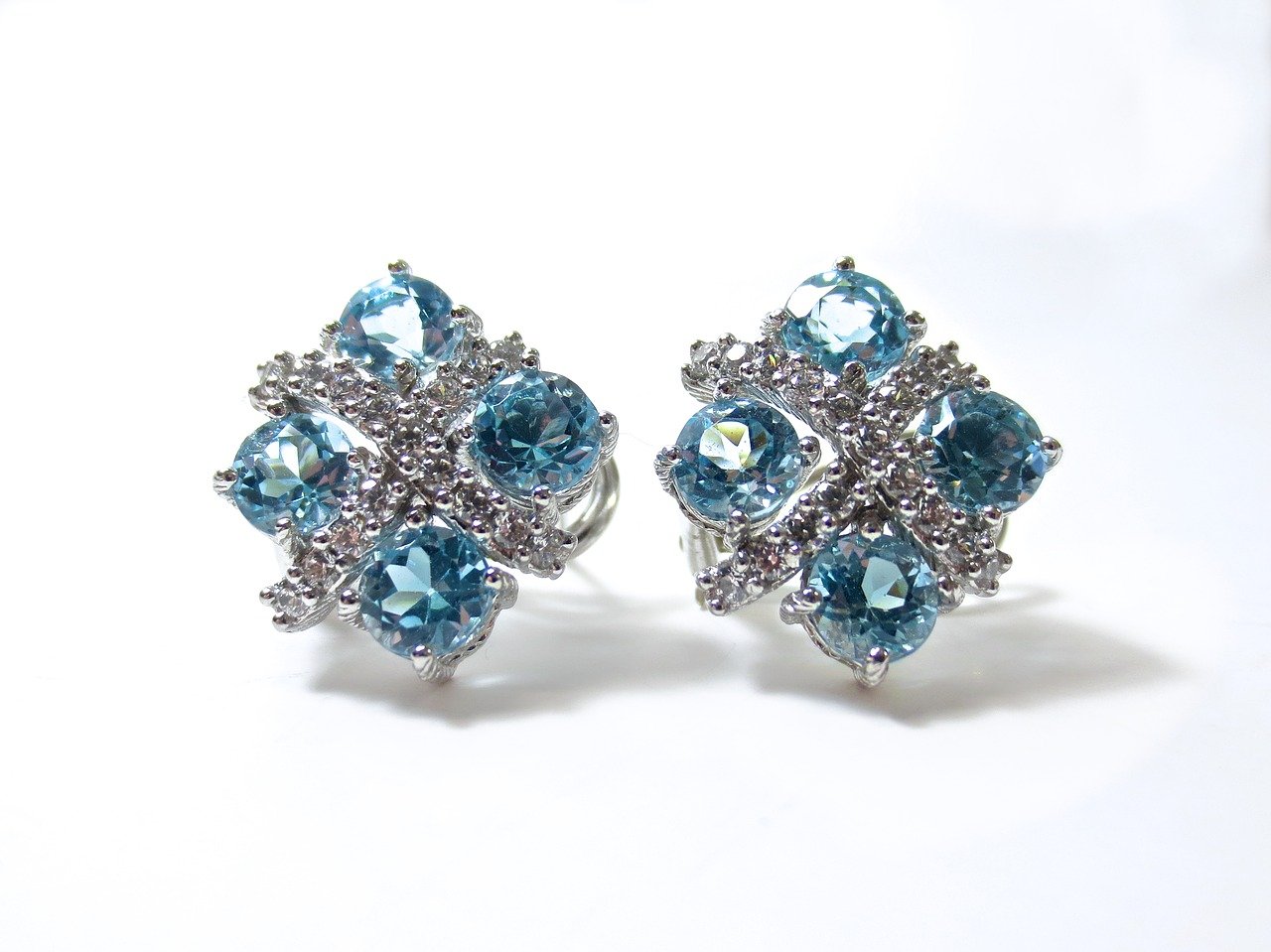Although aquamarine and bloodstone, the two birthstones for March, look entirely different, they both protect the wearer’s well-being in similar ways.
Aquamarines range in colours from deep blue-green, to light, slightly greenish-blue shades that resemble the sea. Faceted aquamarines are frequently as clear as water and free from inclusions, which symbolises purity of the soul and spirit.

Bloodstones are usually dark green in colour, with the “blood” being specks of red oxide that bring strength and health to the wearer.

The History And Meaning Of Aquamarine
The name “aquamarine” comes from the Latin meaning for “seawater," with the mariners of centuries past claiming that the gem had the power to calm the waves and protect sailors while at sea. It was also believed to bring happiness to marriage, provide the wearer with protection in litigation and battle, quicken the intellect, and make the wearer amiable and unconquerable.
Aquamarine is also given as a gift for 19th wedding anniversaries.
The aquamarine March birthstone became famous when the government of Brazil, in 1936, gifted First Lady of the USA, Eleanor Roosevelt, with a rectangular, step-cut, dark blue aquamarine weighing a whopping 1,298 carats!

Where Does Aquamarine Come From?
Minas Gerais, in Brazil, has been a prominent source of aquamarine for the past two hundred years. Aquamarines can be found in hard rock (primary) and weathered (secondary) peg mite deposits in the eastern part of the region, close to central Teofilo Otoni.
The Karakorum foothills of Pakistan is another place where miners have to ascend steep paths to reach the deposits of water clear aquamarine stones.
This March birthstone is also found in Madagascar, Nigeria, Zambia, Mozambique, Kenya, and several other places in Africa. Deposits are also found in the US, in Colorado and California, as well as in other regions of the world, including Myanmar, Russia, Ukraine, and China, among others.
Care And Cleaning Of Aquamarine
Since it has a hardness of 7.5 to 8 on the Mohs scale, the aquamarine has the durability to be worn on a daily basis. The stone can be easily cleaned by using warm water, a gentle dish soap, and a toothbrush, to clean the back of the stone where dirt might collect. Other cleaning options include steam cleaning and ultrasonic cleaners, which are normally quite safe, provided that the gem is free of fractures or liquid inclusions.
The History And Meaning Of Bloodstone
Also referred to as “heliotrope,” bloodstone is a type of cryptocrystalline quartz (chalcedony) that is normally semi-translucent to opaque dark green jasper, with inclusions of red iron oxide, particularly hematite. The name “heliotrope” is an ancient Greek word meaning “turn to the sun.”
During those days, it was believed that the bloodstone, when placed in water, could turn the sun red. Some also believed the colour pattern had a religious meaning and represented the blood of Christ.
This March birthstone is also believed to preserve the health of the wearer and give him/her invisibility, youth, and strength. These days, the bloodstone is believed by many people, to be a lucky charm, and is valued by sportspersons and others who want to increase their strength. Even in today’s India, the stones are crushed and sold in powder form as an aphrodisiac.
Even though the bloodstone is not a beautiful as the aquamarine, many people value it for its exclusive properties. Bloodstones used in jewellery are normally cut as cabochons, although there are some exquisite examples that are faceted.
Where Does Bloodstone Come From?
The majority of bloodstone on the market today is found in India. However, it is also found in areas of Australia, the USA, China, and Brazil, and other countries. Bloodstone is found as fillings in cavities and fractures in other pebbles and rocks in riverbeds.

How To Care For Bloodstone Jewellery
A soft brush and warm, soapy water are all that is needed to clean the bloodstone, followed by a good rub with a clean, soft cloth to dry it. Excessive heat or harsh chemicals should never be used to clean a bloodstone.
With a hardness level of 6.5 to 7 on the Mohs scale, it is essential to wrap bloodstone in soft fabric during storage, to prevent it from getting scratched.
You can view our fine collection of Aquamarine jewellery here



